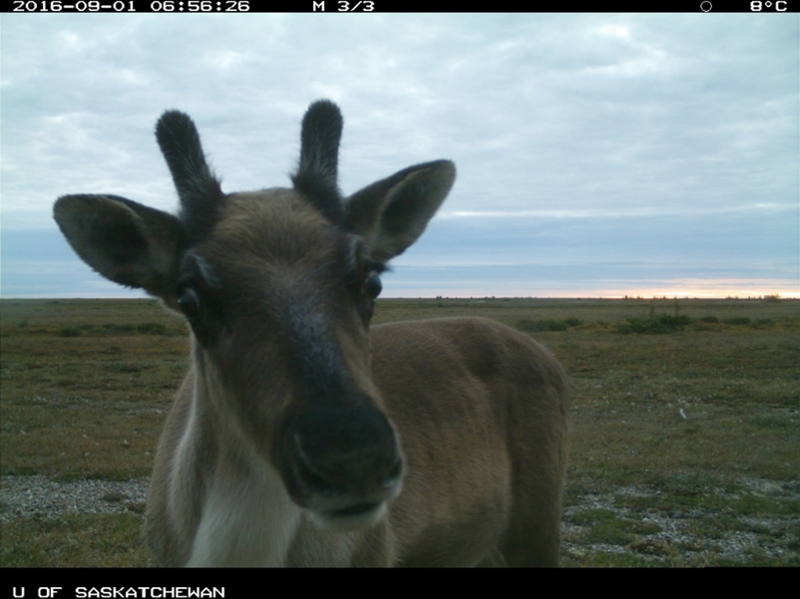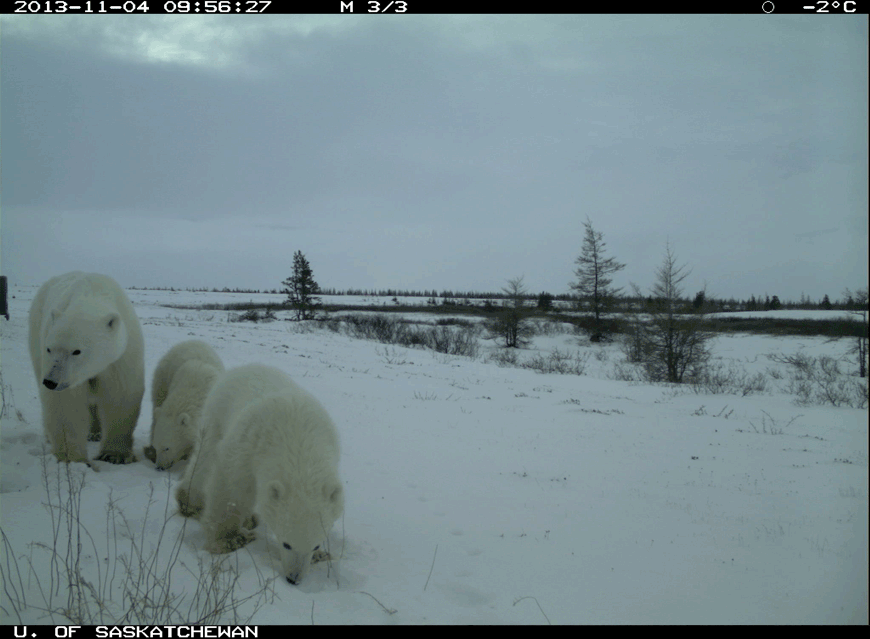
Trail Camera Images: Wapusk National Park
Wapusk National Park is a remote, northern place that few people are lucky enough to visit in their lifetime. Fortunately, remote trail cameras provide an opportunity for the world to see the park’s wildlife, undisturbed by the presence of people.

*This story is a re-post from the Parks Canada website for Wapusk National Park*
While these cameras have captured amazing photographs which we’re pleased to share here, their main purpose is to help Parks Canada answer important questions about wildlife within Wapusk National Park and how they interact with people.
In 2008-2009, Parks Canada built fenced camps at Broad River and at the Owl River delta. They were constructed away from the coastline to minimize the risk of encountering polar bears. Park staff later reported occasional bear sightings and so in 2010 installed trail cameras to see what wildlife was coming to the camps.
In 2011, Parks Canada began working with Dr. Douglas Clark, a professor at the University of Saskatchewan and former Park Warden at Wapusk National Park. More cameras were installed to determine whether the camps were attracting polar bears, and if so, to provide information to help Parks Canada plan for human and bear safety at the camps. These professional-grade trail cameras operate day and night, year-round, and are triggered when their sensors detect moving warm objects. The cameras are bolted to the fence and are protected by heavy-duty steel cases. The flash is infra-red, minimizing disturbance to wildlife at night.
Soon after installation of these cameras, researchers and park staff realized there was more we could learn from the photos than anyone had originally expected. The cameras are able to document precisely when the bears first come ashore in spring and when they move back onto the sea ice in winter. The images can also show how fat the bears are in any given year, which is an important influence on how many cubs they will have and how well they will survive. Researchers can often determine which bears are visiting the camps: at Nester One research camp, in the northern region of the park, it’s mainly adult males, whereas at the other two camps adult females with cubs are most commonly observed. More information about these research findings can be found in the following paper “Temporal aspects of polar bear occurrences at field camps in Wapusk National Park”.
Parks Canada staff collect the cameras’ memory cards each winter when the park is accessible by snowmobile. Cameras are often buried and must be dug out of snow drifts. The images are then sent to Dr. Clark and his team for research purposes. Images are also shared with Parks Canada to showcase the park and its wildlife to all Canadians.
Besides polar bears, the cameras capture images of a wide variety of animals that Canadians love. Please enjoy this gallery of images the cameras have captured. Be sure to check back soon as this page will be updated with new pictures.
We thank the following institutions for their support of this research:
- University of Saskatchewan
- Social Sciences and Humanities Research Council of Canada
- Churchill Northern Studies Centre, Northern Research Fund
- TUNDRA / Norwegian Research Council

